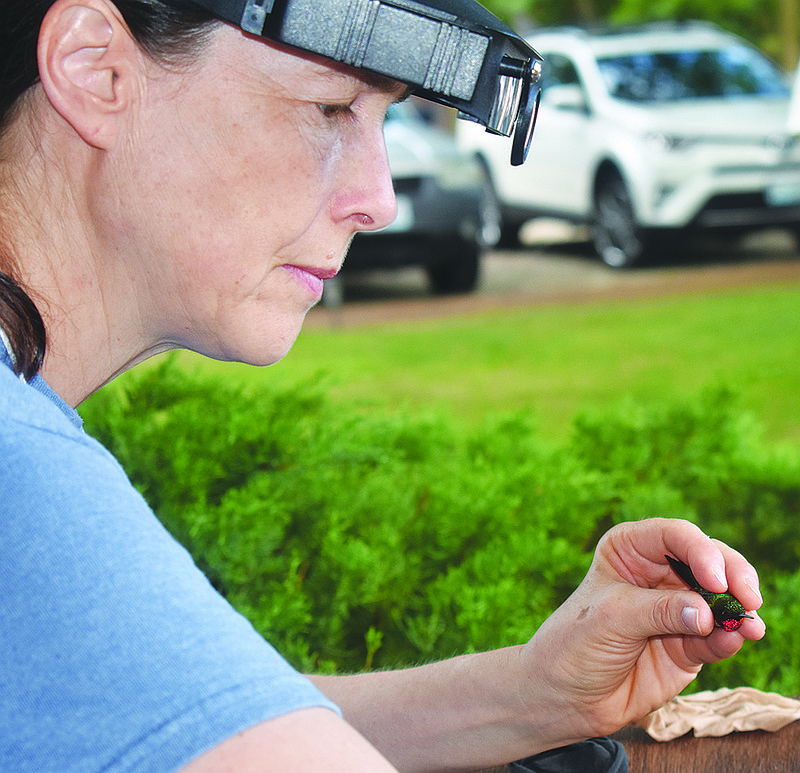Hummingbirds stole the show Sunday morning on the last day of the Missouri Bluebird Conference.
Several dozen attendees were treated to a hummingbird banding demonstration by Veronica Mecko at the Cole County farm owned by Norm and Beth Stucky.
On the Stucky's porch, Mecko used a trap to catch four hummingbirds, which she weighed, measured and banded before releasing them.
The event was held early in the morning, because heat can put stress on hummingbirds, so it's not safe to capture and release them when it gets too hot.
In 2012, Mecko worked for four months as a field assistant in Costa Rica studying hummingbirds and their nectar sources. The next year, she trained with Bob and Martha Sargent at Cook's Lake in Arkansas to learn how to band hummingbirds, then she apprenticed with Lanny Chambers, a hummingbird bander from the St. Louis area.
She has worked seasonally with Missouri River Bird Observatory from 2013-17, operating the grassland banding stations, conducting grassland bird surveys, and doing education events throughout Missouri.
She said by banding the birds, she hopes to aid in efforts to learn more about their migrations patterns.
Three of the four ruby-throated hummingbirds she banded Sunday were young birds that likely hatched in the area. Each band has a unique number.
"Through the banding, we know that there have been ruby-throated hummingbirds that are banded and nine years later they are captured. They come here to breed, they fly to Central America for the winter and they come back.
"What we would really like to know is where do they go in Central America? We don't know that," she said.
The annual bluebird conference was Friday through Sunday, featuring a workshop on next box and baffle building, three speakers and a banquet featuring a program by author/photographer Matt Miles.
Steve Garr, president of the Missouri Bluebird Society, has studied bluebirds since 1978.
"Of course, it's our state bird here in Missouri, which is so nice," he said. "Some people, when they say 'bluebird,' they don't realize it's the eastern bluebird they're talking about. It's a beautiful red, white and blue bird. It's rust-colored chest is almost red.
"The eye set of the bluebirds, it's almost like they're looking back at you," he said. "A lot of people don't realize how easy it is to attract the bluebirds just by putting up a next box and helping them during the nesting season.
The nesting season starts in late winter or early spring. Nesting takes six weeks, so people who have next boxes can typically see at least two nestings per season, he said.
The bluebird population in Missouri is growing, he said, in part due to man-made nesting boxes that are safe from predators.

